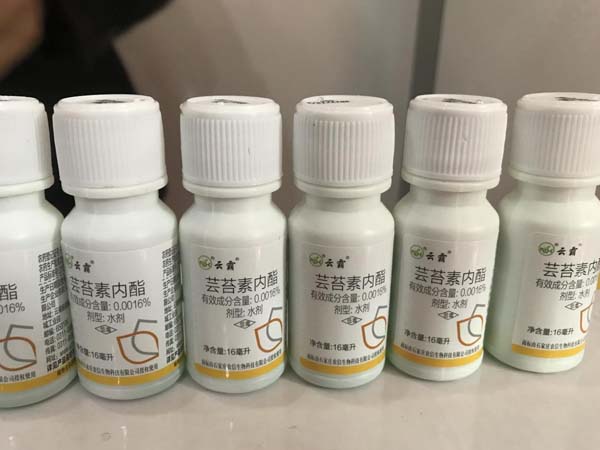Search Product
Search here for what you are looking for:
Search here for what you are looking for:

Plant Growth Regulators
Plant growth regulators are the product of comprehensive development of various scientific technologies such as organic synthesis, microanalysis, plant physiology and biochemistry, and modern agriculture, forestry and horticulture. In the 1920s and 1930s, traces of natural plant hormones such as ethylene, 3-indole acetic acid and gibberellin were found in plants, which have the effect of controlling growth and development. In the 1940s, research on synthetic analogues began, and 2,4-D, amine fresh ester (DA-6), chlorpyrifos, sodium nitrophenolate, α-naphthylacetic acid, and bud-dan were gradually developed. Promote use and form a category of pesticides (see table). More than 30 years of artificial plant growth regulators have been synthesized, but due to the complicated application technology, their development is not as rapid as pesticides, fungicides and herbicides, and the application scale is also small. However, from the perspective of the needs of agricultural modernization, plant growth regulators have great potential for development, and there has been a trend of accelerated development in the 1980s. China has been producing and applying plant growth regulators since the 1950s.
For the target plant, the plant growth regulator is an exogenous non-nutritive chemical that is usually transported to the site of action in the plant and promotes or inhibits certain aspects of its life process at a very low concentration. To meet the needs of human development. Each plant growth regulator has a specific use, and the application technology requirements are quite strict, and specific effects can be exerted on the target plant only under specific application conditions (including external factors). Frequent changes in concentration result in opposite results, such as a promotion at low concentrations and inhibition at high concentrations. Plant growth regulators have many uses, depending on the variety and target plant. For example: control germination and dormancy; promote rooting; promote cell elongation and division; control lateral buds or tillers; control plant type (short-strong anti-fall); control flowering or sex ratio, induce no fruit; flower thinning, control fruit drop Control the shape or maturity of the fruit; enhance stress resistance (resistance, drought resistance, salt tolerance, antifreeze); enhance the ability to absorb fertilizer; increase sugar or change acidity; improve flavor and color; promote latex or resin secretion; Or evasive (for easy mechanical harvesting); preservation and so on. Some plant growth regulators are herbicides used at high concentrations, and some herbicides have growth regulation at low concentrations.

Brassinolide is a new, green and environmentally friendly plant growth regulator, quick effect, super concentrated, low cost, high utilization
It can regulate the balance of endogenous hormones in plants, promote the growth and development of plants and the absorption and operation of nutrients
It can alleviate the harm of the medicine, harm the fertilizer, increase the stress resistance of the crop, increase the synthesis of chlorophyll, effectively relieve the etiolated degree of leaves, and it will take effect on the day after spraying, and will quickly return to life
Promote strong seedlings, improve quality, and increase production significantly
Green safety, compounding or mixing with pesticides, fungicides, herbicides, seed coating agents, fertilizers . It is suitable for a wide range of green plants.